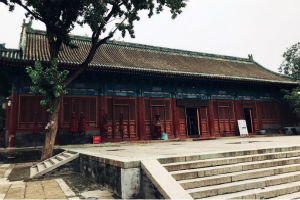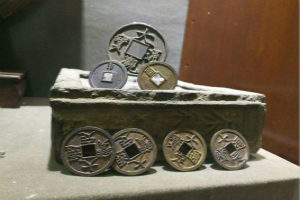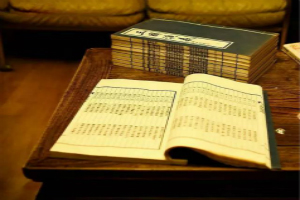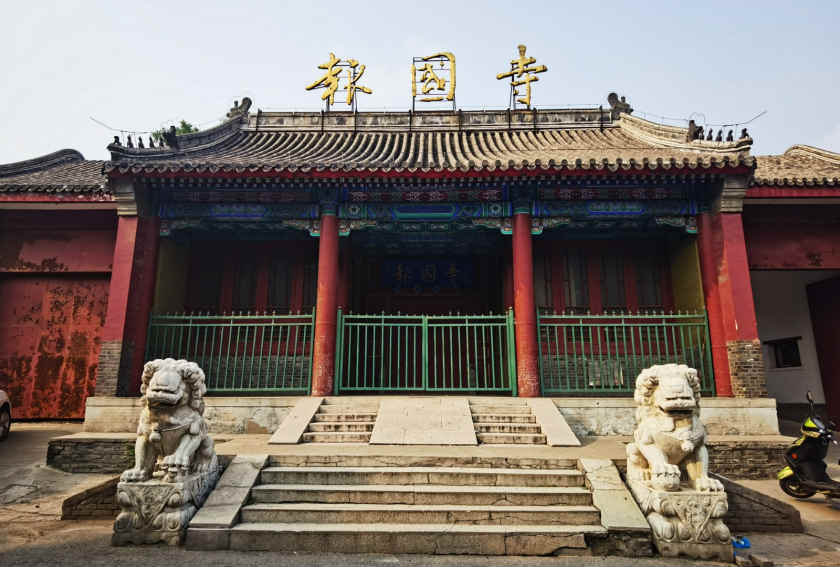Chinese Name: 报国寺 Pronunciation: Bàoguó Sì
Ticket: 8 yuan
Best Visiting Season: All seasons
Recommended Time for Visit: 1-2 Hours
Building Time: The Liao Dynasty (907-1125)
Occupied Area: 15.5 hectares (155, 000 square meters)
Address: No.1, Baoguosiqian Street, Xicheng District, Beijing
Building Function: It used to be a Buddhist temple, and now it is a culture street.
| Content | Peak Season (April 1st to October 31st) |
Low Season (November 1st to March 31st) |
| Opening Hours | 9:00 - 19:00 | 10:00 - 17:00 |
Located at No.1, Baoguosiqian Street, Xicheng District, Beijing, the Baoguo Temple lies in the downtown area. At present, the temple has inherited the cultural context of hundreds of years and has become a cultural square in the book fair, which is indeed a prosperous move. The stele of the imperial system in the second year of Chenghua’s reign and the poem tablet of the Baoguo Temple rebuilt in the 21st year (1755) of Qianlong’s reign are still preserved in the temple. The Baoguo Temple is a key cultural relic in Beijing.

The Baoguo Temple hosted the earliest official antique market in Beijing. Many of the famous collectors around China now started their business here. Before 1996, only coins and stamps were traded in the street market. In 1997 the First National Coin Exposition was held in the temple. At the same time, the antique market of the Baoguo Temple was officially opened. On the first day, more than 10,000 cion lovers and visitors from all over the country visited the market. Now the expo opens four times a year.
In the winter of 2002, the Baoguo Temple Coin Museum was set up with a ticket of 10 yuan. More than 120 members from all over the country attended the opening ceremony, and now they have become elites of the numismatic field. In 2004, the Baoguo Temple Bronze Museum was established. After a period of trials, the present layout of the Baoguo Temple was formed.
Now the Baoguo Temple is the ideal marketplace for lovers of books, coins and stamps.
The Baoguo Temple was built in the Liao Dynasty but on a very small scale. It was also called the Small Baoguo Temple. The temple collapsed in the early Ming Dynasty. In the second year of Chenghua reign (1466), it was rebuilt and renamed as Ciren Temple, commonly known as the Baoguo Temple.

During the Chenghua reign period of the Ming Dynasty (1465-1487), it was expanded into "Ciren Temple". After the expansion, the Ciren Temple saw a large scale, with seven stories of halls and rooms, and "Pilu Pavilion" was built in the backyard (Pilu is the name of a Buddha). The pavilion was thirty-six stairs high, and the surrounding long corridor could be used to overlook the city. In Pilu Pavilion, there was also a statue of Guanyin (Avalokitesvara), which was the treasure of the temple.
In the 18th year of Kangxi’s reign (1679), most buildings of the Baoguo Temple collapsed due to a great earthquake in Beijing. In the 19th year of the Qianlong reign of the Qing Dynasty (1754), it was rebuilt and renamed as "Ciren Temple of Dabaoguo". Now it is called the Baoguo Temple.

In the late Ming and early Qing Dynasties, the book fair in Baoguo Temple was once the most famous one in Beijing, which is earlier than the Liulichang book fair. The temple was once a popular place for literati at that time, leaving many legendary stories.
Gu Yanwu (1613-1682), a famous thinker and historian in the late Ming and early Qing Dynasty, lived in the Baoguo Temple after he came to Beijing in 1658. Besides strolling through the book fair, he devoted himself to writing and academic research. He advocated “Knowledge and action should go hand in hand”, “erudition in literature” and “shame in conduct”, which had a great influence on later generations. Many of his works provide valuable materials for the study of Beijing history. When Gu Yanwu passed away, many of his friends and famous people often came to the Baoguo Temple to offer sacrifices.
Take bus 5, 109, or 6 and get off at West Niujie Road Station.
Take Metro Line 4 (Daxing) and get off at Caishikou Station and exit E.
Chinese: 请带我去报国寺。English: Please take me to the Baoguo Temple.
If you go to the Baoguo Temple from the center of Beijing (Grand Hyatt Beijing), it takes about 20 minutes (about 30 yuan).
If you go to the Baoguo Temple from Beijing Capital International Airport, it takes about 40 minutes (about 120 yuan).
If you go to the Baoguo Temple from Beijing Daxing International Airport, it takes about 50 minutes (about 170 yuan).
If you go to the Baoguo Temple from Beijing West Railway Station, it takes about 10 minutes (about 20 yuan).
